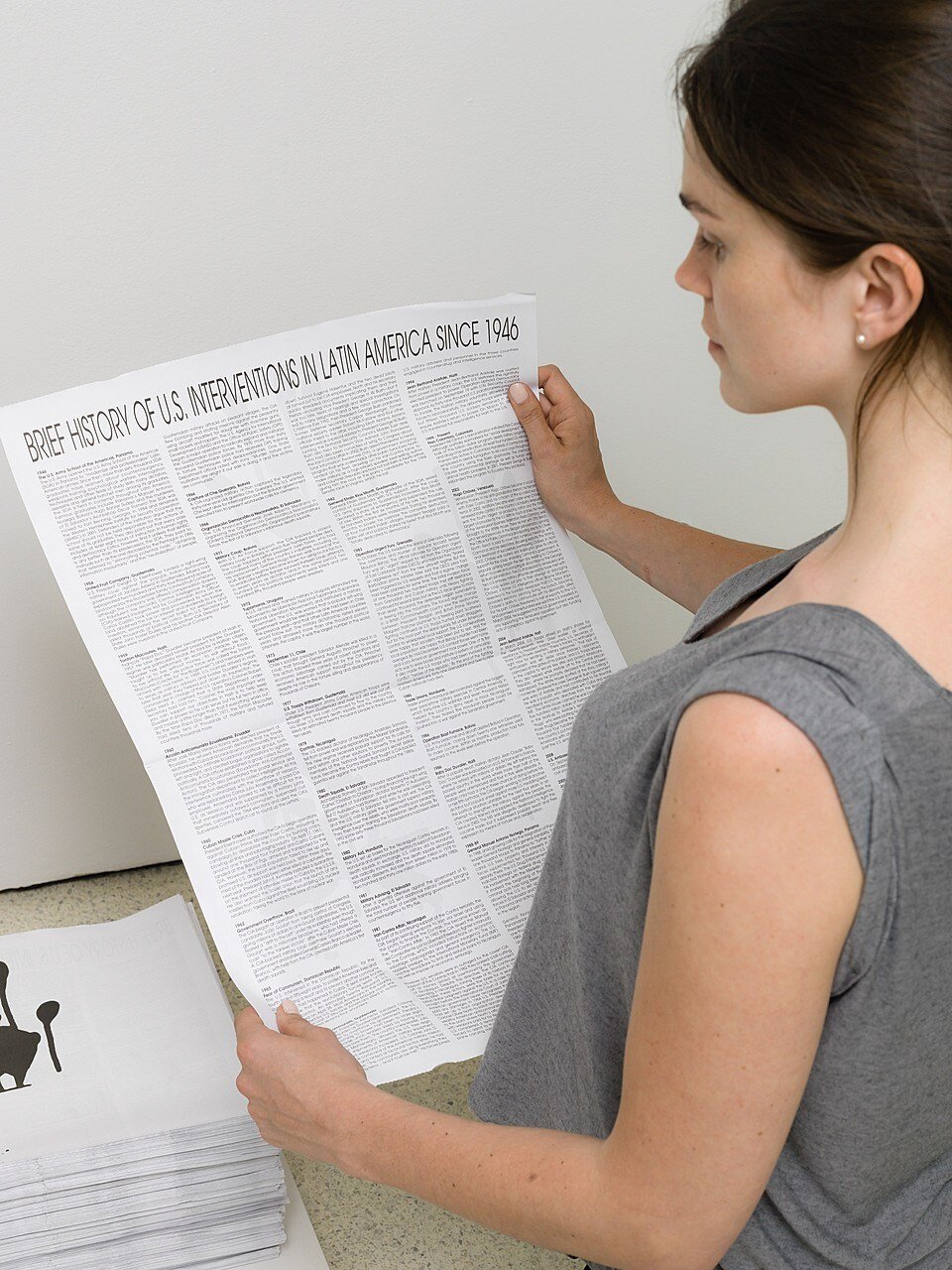
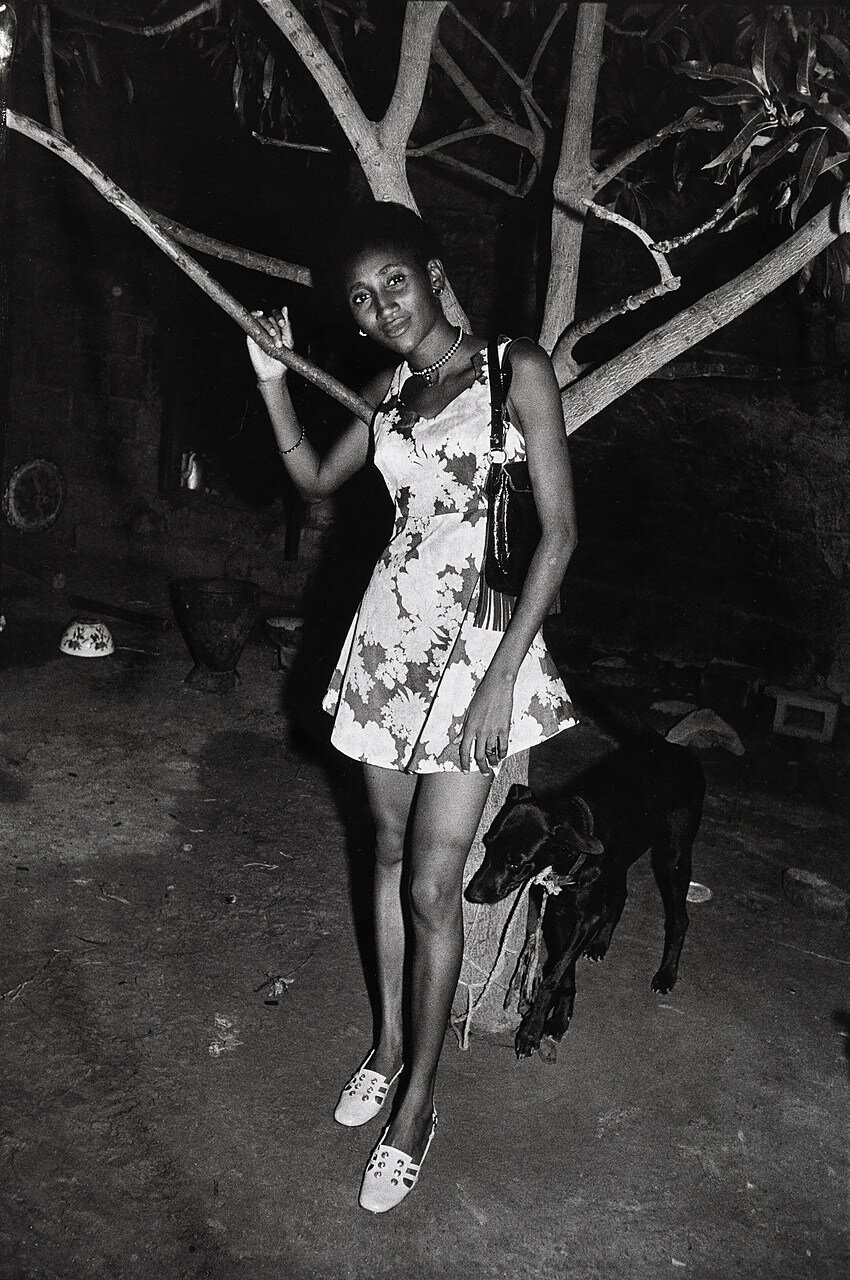
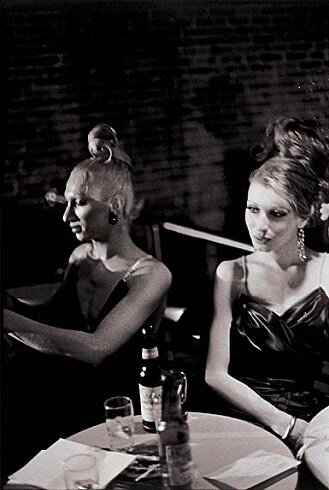
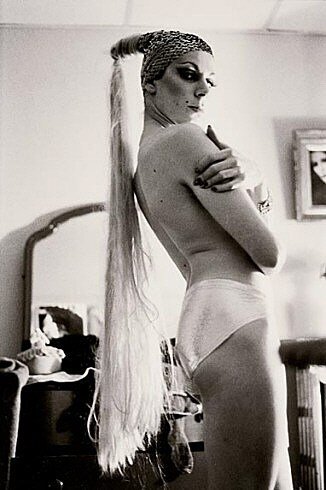
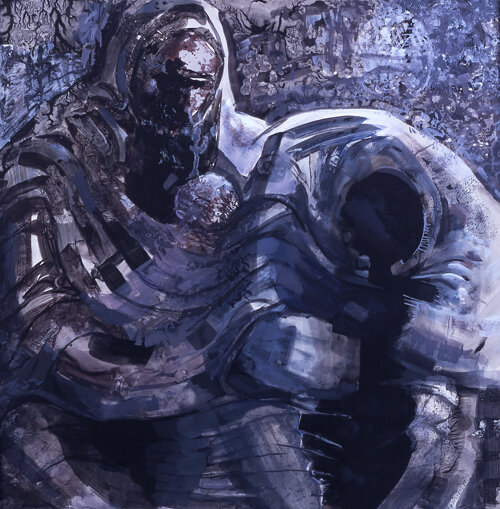
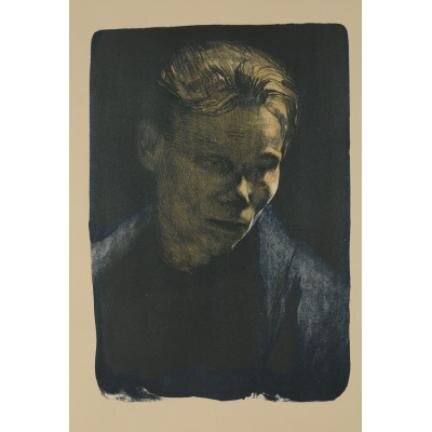

Carlos Motta, 2005/14, Solomon R. Guggenheim Museum, New York Guggenheim UBS MAP Purchase Fund, 2014
MEDIUM: Endless supply of an offset lithograph on newsprint, image based on a photograph by Susan Meiselas of the White Hand signature left by a Salvadorean death squad on the door of a slain peasant leader
"Brief History is part of a series produced by Carlos Motta between 2005 and 2009 that presents two chronologies of events in Latin America: one of U.S. interventions in the region since 1946, and one of the area’s leftist guerrilla movements. One side of the print outlines the interventions’ interconnected narratives in text; the other depicts two bloody handprints and the symbol of the Mano Blanco death squads from 1980s El Salvador. The whole work thus contrasts the orderly, objective quality of written “facts” with the visceral immediacy of images associated with violence."

Malick Sidibé, 1973 (printed 1998), Gelatin silver print, Solomon R. Guggenheim Museum, New York Gift, The Bohen Foundation, 2001
“Malick Sidibé opened Studio Malick in the Bagadadji neighborhood of Bamako, Mali, in 1962. Unlike those of his predecessors, his studio was an electrified indoor establishment that achieved its heyday during the 1960s and ’70s. Although Sidibé favors studio portraiture, which often commemorates special occasions and captures clients looking their best, he is arguably most renowned worldwide for party photographs that showcase his capacity to frame bodies in motion.
During the 1960s, photographic settings became more intimate, reflecting the interests and activities of youthful clientele, including domestic interiors and courtyards as well as local beaches along the Niger River. This change was enabled by technological advances, such as medium-format flash cameras and safety celluloid film, which rendered the medium increasingly accessible and portable. Of the same generation as their subjects, photographers like Sidibé and later his assistants actively participated in the social circles they depicted. Early in the decade, Sidibé’s images captured the optimism of the independence era and the ecstatic energy of Bamako’s youth expressing their individuality at neighborhood parties and dances. Participating in an international cultural revolution, these individuals rallied behind rock ’n’ roll and rhythm and blues music, pursuing social liberties and trends promoted by performers such as James Brown.
Under the repressive socialism of President Modibo Keïta (1960–68) in the mid-1960s and the subsequent military dictatorship of President Moussa Traoré (1968–91), Studio Malick’s photographs represent the irreverent attitudes and activities of men and women in Bamako who were frustrated by and defied restrictive governmental policies. Violating curfew, they organized and attended late-night parties, wore provocative Western clothing, and enjoyed imported consumer goods such as records and alcohol, at times illegally. Thus, portraits made by Sidibé and his assistants during the late 1960s and ’70s depict recalcitrant individuals enjoying forbidden freedoms.” Candace M. Keller

Nan Goldin, 1972, Gelatin silver print, Solomon R. Guggenheim Museum, New York Purchased with funds contributed by the Photography Committee and with funds contributed by the International Director's Council and Executive Committee Members: Ruth Baum, Edythe Broad, Elaine Terner Cooper, Dimitris Daskalopoulos, Harry David, Gail May Engelberg, Shirley Fiterman, Nicki Harris, Dakis Joannou, Linda Macklowe, Peter Norton, Willem Peppler, Tonino Perna, Elizabeth Richebourg Rea, Simonetta Seragnoli, David Teiger, and Elliot K. Wolk, 2002
“Between 1972 and 1974, Nan Goldin shot black-and-white photographs of her friends at The Other Side, a drag bar in Boston, in her words “to pay homage” to those whose “third gender . . . made more sense than either of the other two.” Ivy with Marilyn, Boston, from this body of work, presages her subsequent groundbreaking color images in content and style. In this portrait of a person with whom the artist is personally involved, made on the scene, rather than in a studio, Ivy, a pre-op transsexual, embodies the gender ambiguity that Goldin found so liberating. Goldin frequently portrays her subjects, which include herself, in their homes or socializing in clubs and bars. Elements of the décor—such as masks or in this photograph, the Andy Warhol poster of Marilyn Monroe—often echo the belief in identity as a performance of a personal ideal, one that may be at odds with mainstream conceptions of gender.
After finishing art school in 1978, Goldin moved to New York, where she continued to photograph her friends—artists and performers, denizens of the burgeoning East Village underground. By this time she was using color film and assembling her vast archive of slides into an ever-expanding show accompanied by an evocative music track, which she presented in clubs in the early 1980s. In her influential book, The Ballad of Sexual Dependency (1986), she focused on relationships and daringly portrayed her and her friends’ passionate encounters. The Ballad, which includes portraits of individuals, images of separate and mixed-gender groups, and shots of coupling, partying, and violent acting out, suggests a passage from euphoria to dysphoria and back in an endless cycle of pleasure and pain. In Trixie on the cot, NYC, the artifice of her outfit—thrift-shop party dress, heavy make-up, and doll-like hair ribbons—evokes an exaggerated femininity, a self-presentation that dovetailed with a growing mainstream questioning of gender. Greer and Robert on the bed, NYC, also from the book, hints at an inevitable discord between a heterosexual couple, but as in most of Goldin’s work, their gender is mutable and fluid.
Goldin’s timely subject matter subsequently serves as a loving memorial to a community ravaged by drug addiction and AIDS. Formally, her deft use of lush color, as well as her large-scale (76.2 x 101.6 cm) Cibachrome prints, made Goldin both a leader in the phenomenal expansion of color photography into contemporary art in the 1980s as well as an inspiration for other artists through the 1990s.”

Between 1972 and 1974, Nan Goldin shot black-and-white photographs of her friends at The Other Side, a drag bar in Boston, in her words “to pay homage” to those whose “third gender . . . made more sense than either of the other two.” Ivy with Marilyn, Boston, from this body of work, presages her subsequent groundbreaking color images in content and style. In this portrait of a person with whom the artist is personally involved, made on the scene, rather than in a studio, Ivy, a pre-op transsexual, embodies the gender ambiguity that Goldin found so liberating. Goldin frequently portrays her subjects, which include herself, in their homes or socializing in clubs and bars. Elements of the décor—such as masks or in this photograph, the Andy Warhol poster of Marilyn Monroe—often echo the belief in identity as a performance of a personal ideal, one that may be at odds with mainstream conceptions of gender.
After finishing art school in 1978, Goldin moved to New York, where she continued to photograph her friends—artists and performers, denizens of the burgeoning East Village underground. By this time she was using color film and assembling her vast archive of slides into an ever-expanding show accompanied by an evocative music track, which she presented in clubs in the early 1980s. In her influential book, The Ballad of Sexual Dependency (1986), she focused on relationships and daringly portrayed her and her friends’ passionate encounters. The Ballad, which includes portraits of individuals, images of separate and mixed-gender groups, and shots of coupling, partying, and violent acting out, suggests a passage from euphoria to dysphoria and back in an endless cycle of pleasure and pain. In Trixie on the cot, NYC, the artifice of her outfit—thrift-shop party dress, heavy make-up, and doll-like hair ribbons—evokes an exaggerated femininity, a self-presentation that dovetailed with a growing mainstream questioning of gender. Greer and Robert on the bed, NYC, also from the book, hints at an inevitable discord between a heterosexual couple, but as in most of Goldin’s work, their gender is mutable and fluid.
Goldin’s timely subject matter subsequently serves as a loving memorial to a community ravaged by drug addiction and AIDS. Formally, her deft use of lush color, as well as her large-scale (76.2 x 101.6 cm) Cibachrome prints, made Goldin both a leader in the phenomenal expansion of color photography into contemporary art in the 1980s as well as an inspiration for other artists through the 1990s.
ARTIST
Nan Goldinb. 1953, Washington, D.C.
TITLE
Ivy wearing a fall, Boston
DATE
1973
MEDIUM
Gelatin silver print
DIMENSIONS
19 7/8 x 15 7/8 inches (50.5 x 40.3 cm)
CREDIT LINE
Solomon R. Guggenheim Museum, New York Purchased with funds contributed by the Photography Committee and with funds contributed by the International Director's Council and Executive Committee Members: Ruth Baum, Edythe Broad, Elaine Terner Cooper, Dimitris Daskalopoulos, Harry David, Gail May Engelberg, Shirley Fiterman, Nicki Harris, Dakis Joannou, Linda Macklowe, Peter Norton, Willem Peppler, Tonino Perna, Elizabeth Richebourg Rea, Simonetta Seragnoli, David Teiger, and Elliot K. Wolk, 2002

Käthe KOLLWITZ, 1903
Dimensions: Image: 36.4 × 24.5 cm (14 5/16 × 9 5/8 in.) Support: 51 x 40.2 cm (20 1/16 x 15 13/16 in.)
Medium: Colour lithograph on sturdy tan wove paper